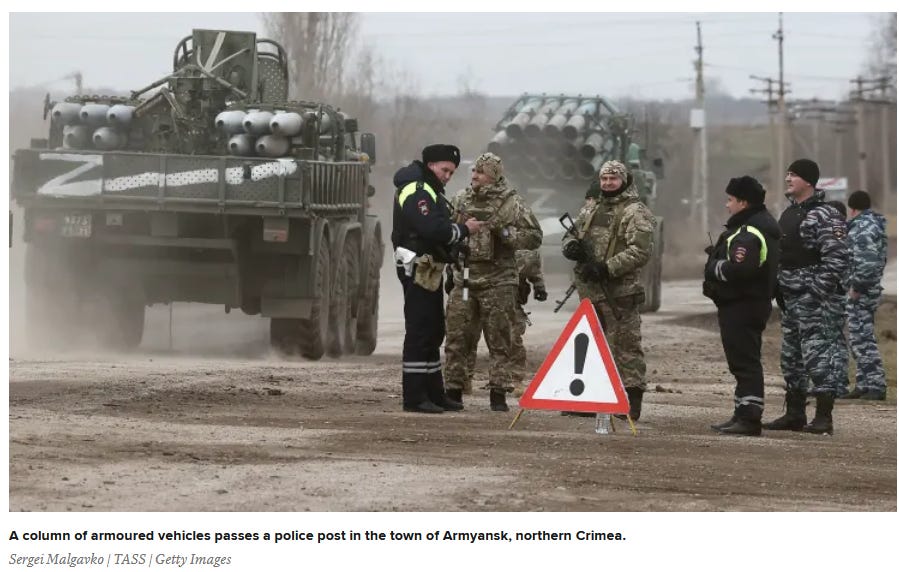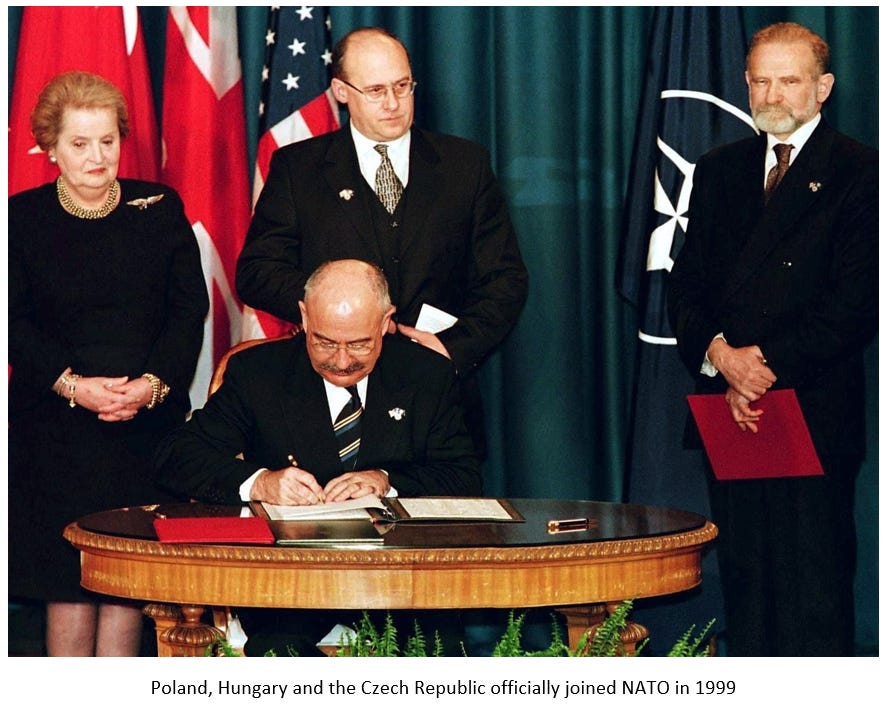Ukraine: The Self-Awareness of the Sacrificial Lamb (Part 1 of 2)
Misconceptions about "winners" and "losers", two different wars, mismatch in war aims, getting high on your own supply, the failed counter-offensive
Note: This is a very long essay, with a lot of historical context that many of you have either seen before, and/or are already well-acquainted with. For those not wanting to read that section, skip down to “A Mismatch in War Aims”.
Last month, NATO Secretary-General Jens Stoltenberg warned the military alliance that it should be “prepared for bad news” to come out of the war in Ukraine.
This official warning is the culmination of a series of events stemming not only from the battlefield itself, but also in the diplomatic realm, on the economic front, and at home in the political world of key backers of Ukraine’s effort to defend itself from Russia’s invasion. Stoltenberg went as far as to present the possibility of a Russian victory in the war, saying that it would be a “tragedy for Ukraine” and a “danger for the allies”.
Gone is the audible exuberance and sunny optimism that coloured the public pronouncements of Ukraine’s government and military only this past summer, an enthusiasm shared by many of its backers in the West, especially its mainstream media outlets and social media cheerleaders. We were assured that the Ukraine military’s summer counteroffensive would be able to punch through Southern Zaporizhzhia and reach the Sea of Azov, cutting Russian forces into two and isolating the Crimean Peninsula, leaving it a sitting duck for its eventual liberation from occupation. This would result in the defeat of the Russian invasion, and would lay the groundwork for the overthrow of Vladimir Putin and his regime in Moscow, as such a catastrophic loss would turn the Russian people away from its discredited leadership.
None of this has come to pass. The much-anticipated counteroffensive was a miserable (and very costly) failure, with the front line barely budging. Instead, Ukrainians are now complaining of not just a lack of weaponry, but also significant shortages in manpower to be able to hold the front as the Russian forces continue to engage in a war of attrition against them, one that they are much better suited to pursue, and more importantly, to endure, than Ukraine. Alarm bells are now ringing loudly throughout Ukraine, and across much of the West as well….but not everywhere.
A serious misconception is now spreading widely because of this present state of affairs; the notion that the USA has ‘lost’ its proxy war, and has somehow ‘failed’ in achieving its main objectives. This is an incorrect reading of the situation as it stands today, and although the USA has not ‘run the table’, it has clearly won this conflict when you zoom out to take another look. The USA is the “big winner” in this conflict, with the Russians the “smaller winner”, the EU being the “small loser”, and the Ukrainians being the “big loser” (there are other winners and losers as well). This two-part essay will attempt to explain why I score this conflict the way that I do.
A Tale of Two Wars
On February 24, 2022 Russian forces invaded Ukraine. This was a clear cut case of aggression against an internationally-recognized sovereign state that is also a member of the United Nations, and is also recognized as sovereign by the invading power. Many weak arguments were made to justify the invasion. Examples include that of accusing the Ukrainians of “genocide against the Russians/peoples of the Donbass”, a spurious charge with no merit whatsoever. This invasion is the ‘first war’.
The ‘Second War’
It is only within a larger context that Russia’s invasion can be arguably justified, that being the ‘second war’: that of the US-led West against Russia. This conflict began when the USA reneged on its promise to Mikhail Gorbachev to not expand NATO eastward if the Soviets pulled out of Eastern Europe:
Washington D.C., December 12, 2017 – U.S. Secretary of State James Baker’s famous “not one inch eastward” assurance about NATO expansion in his meeting with Soviet leader Mikhail Gorbachev on February 9, 1990, was part of a cascade of assurances about Soviet security given by Western leaders to Gorbachev and other Soviet officials throughout the process of German unification in 1990 and on into 1991, according to declassified U.S., Soviet, German, British and French documents posted today by the National Security Archive at George Washington University (http://nsarchive.gwu.edu).
The documents show that multiple national leaders were considering and rejecting Central and Eastern European membership in NATO as of early 1990 and through 1991, that discussions of NATO in the context of German unification negotiations in 1990 were not at all narrowly limited to the status of East German territory, and that subsequent Soviet and Russian complaints about being misled about NATO expansion were founded in written contemporaneous memcons and telcons at the highest levels.
The documents reinforce former CIA Director Robert Gates’s criticism of “pressing ahead with expansion of NATO eastward [in the 1990s], when Gorbachev and others were led to believe that wouldn’t happen.”[1] The key phrase, buttressed by the documents, is “led to believe.”
President George H.W. Bush had assured Gorbachev during the Malta summit in December 1989 that the U.S. would not take advantage (“I have not jumped up and down on the Berlin Wall”) of the revolutions in Eastern Europe to harm Soviet interests; but neither Bush nor Gorbachev at that point (or for that matter, West German Chancellor Helmut Kohl) expected so soon the collapse of East Germany or the speed of German unification.[2]
The first concrete assurances by Western leaders on NATO began on January 31, 1990, when West German Foreign Minister Hans-Dietrich Genscher opened the bidding with a major public speech at Tutzing, in Bavaria, on German unification. The U.S. Embassy in Bonn (see Document 1) informed Washington that Genscher made clear “that the changes in Eastern Europe and the German unification process must not lead to an ‘impairment of Soviet security interests.’ Therefore, NATO should rule out an ‘expansion of its territory towards the east, i.e. moving it closer to the Soviet borders.’” The Bonn cable also noted Genscher’s proposal to leave the East German territory out of NATO military structures even in a unified Germany in NATO.[3]
That was the promise made to the Soviets (and for those already protesting what I have said: note that the source of the excerpt above is the NSA), and it was a promise broken when Hungary, the Czech Republic, and Poland were admitted to NATO in March of 1999.
The accession of these former Eastern Bloc states was the result of a broken promise, but it was not as aggressive an act as what would follow that same year: the NATO bombing of Yugoslavia and the forcible detachment of the Serbian province of Kosovo, and integral part of that country. NATO not only moved from being a defensive military organization to that of an offensive one, but it also violated international law (and the concept of national sovereignty that underpins it) in the eyes of not just the Russians. The war against Yugoslavia in 1999 showed that the USA and NATO were willing to engage in offensive war to partition a country, one with strong historical and cultural ties to Russia. It was the launch of the attacks on Yugoslavia that year that led to the famous incident in which then-Russian Premier Evgeny Primakov turned his Washington-bound plane around over the Atlantic Ocean in protest after hearing the news. The lesson that the Russians drew from that conflict was that territorial integrity was subjective to the Americans.






